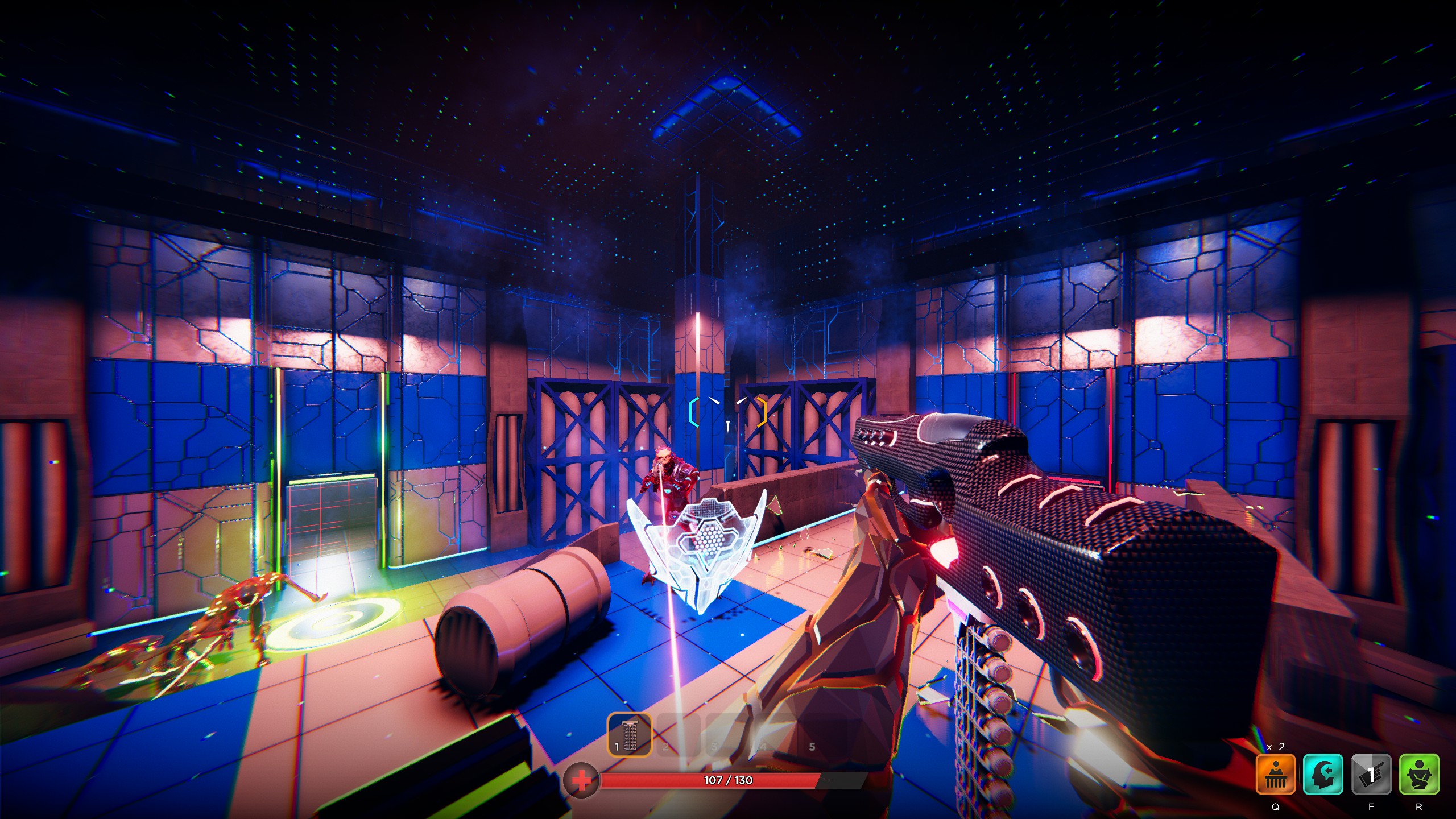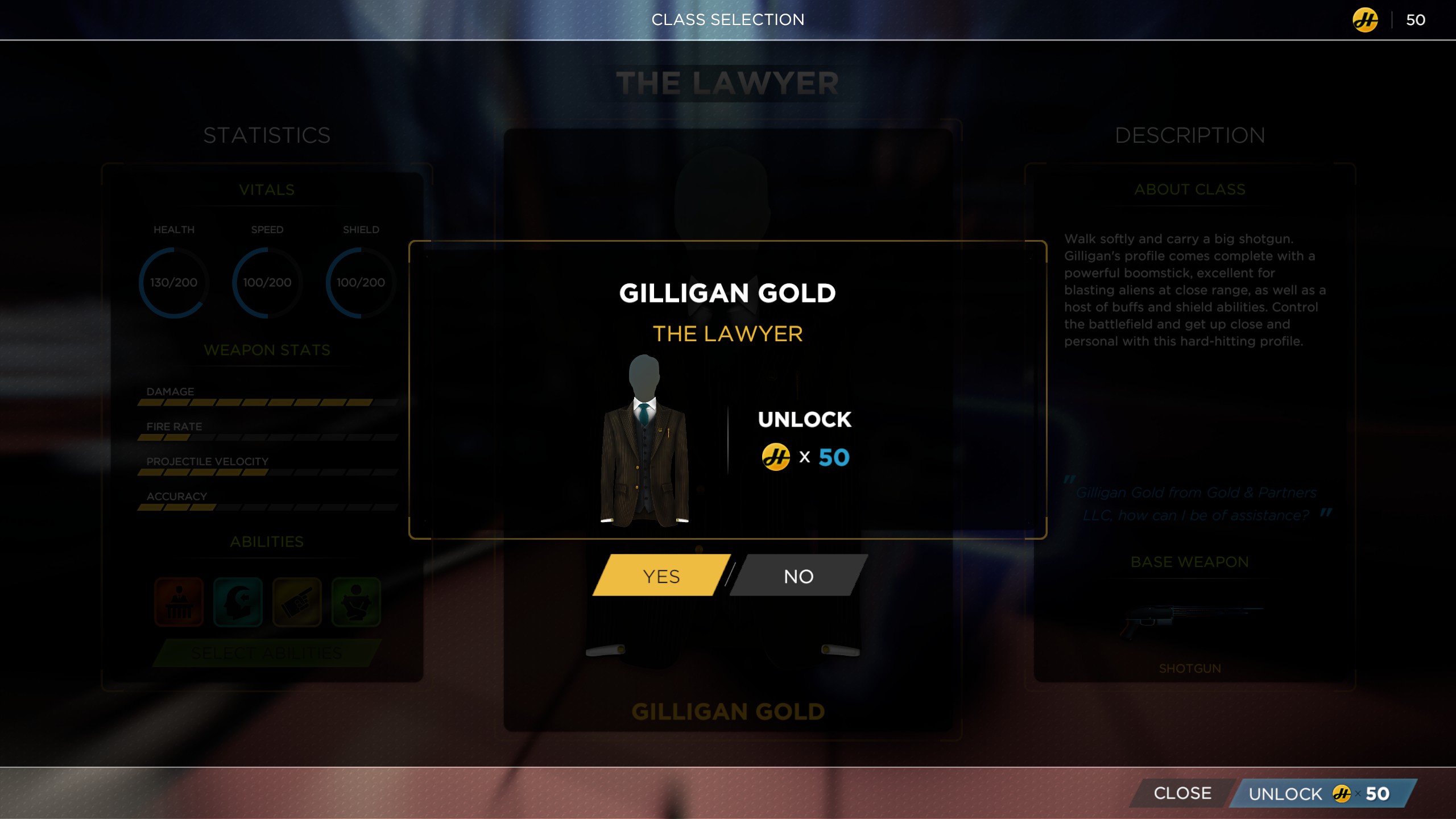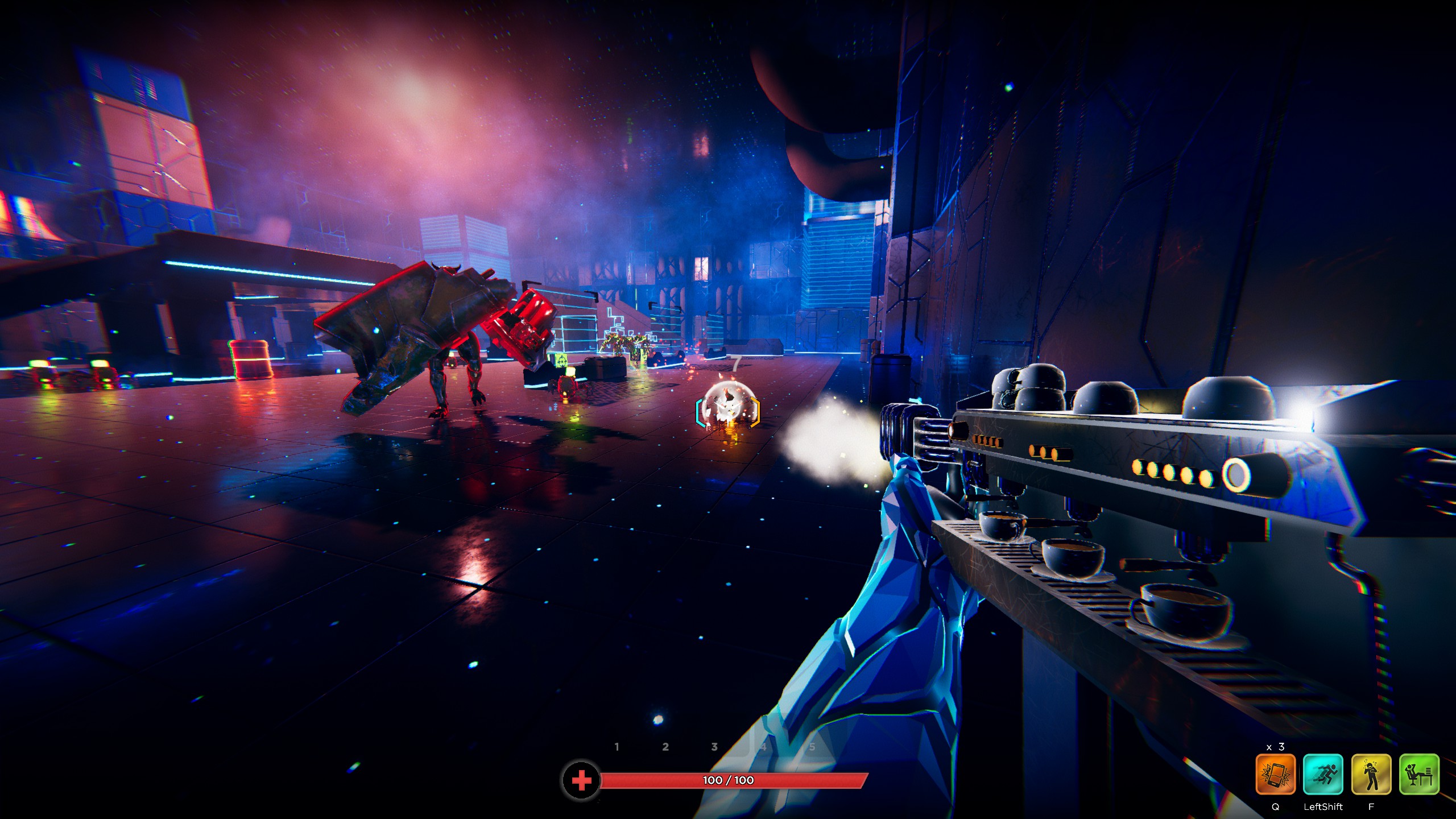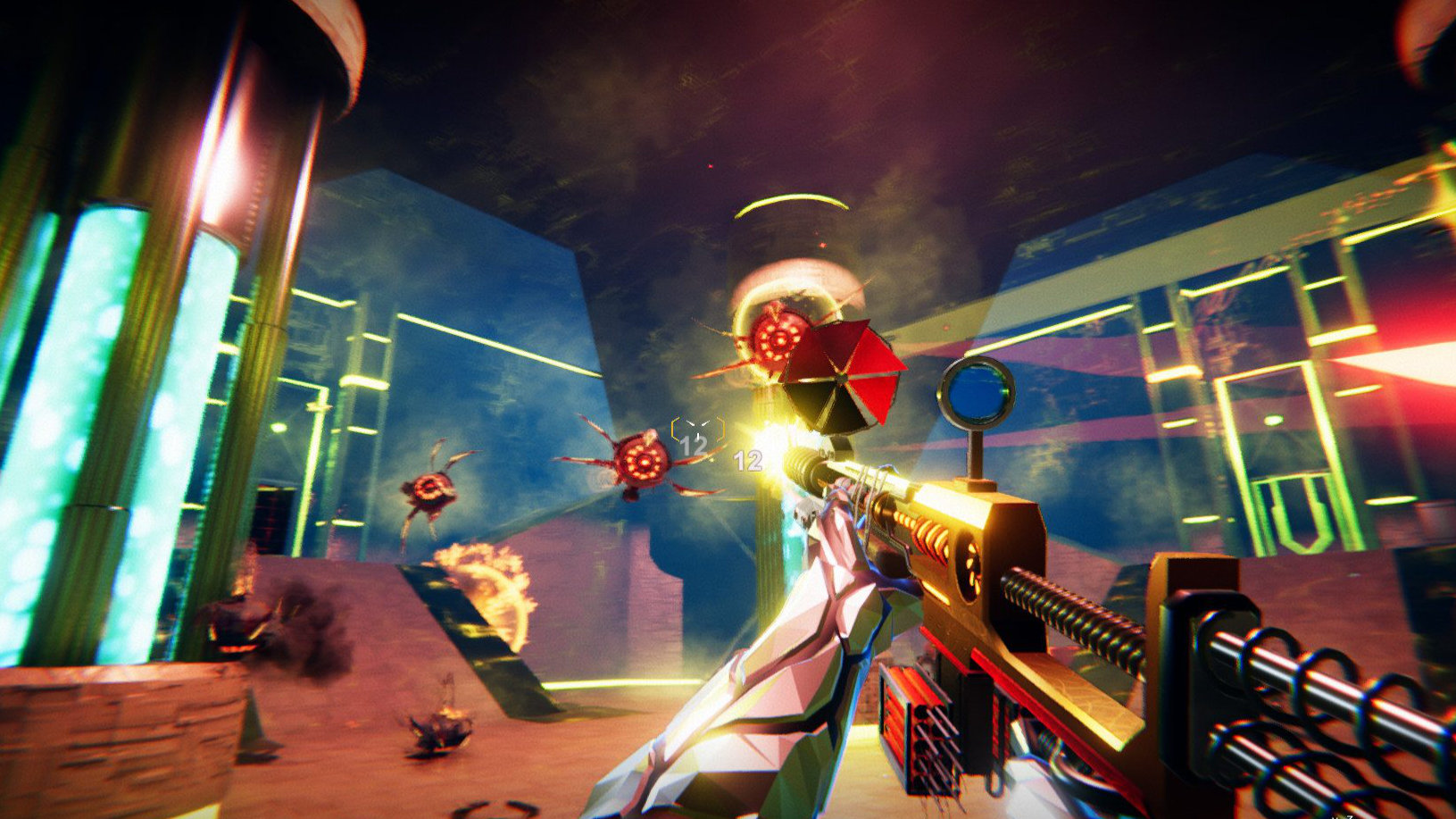HYPERGUN Review
Neon-bathed, fast-paced shooter can’t escape the grind.

HYPERGUN is a roguelite shooter with a thumping techno soundtrack, Quake-esque twitch reflex arena shooting and a pristine neon palette. Stylistically, you couldn’t really ask for more, but the high-intensity action is let down by a reliance on randomness and an achingly slow progression.
First impressions are good. Playing as office intern Dewey Owens, you start off wandering an empty office, reading funny emails, sticky notes and memos left by colleagues. The premise is thin and doesn’t take itself too seriously: aliens have invaded and the only way to stop them is to build the ultimate alien-murdering bullet-spreader. Tough task, but fortunately, Dewey’s office is home to the HYPERGUN simulation – a combat challenge which throws random gun components at you as you try to build the most efficient killing tool possible.
You enter the simulation and are transported into a pulsating neon world made of procedurally-generated maps filled with enemies. You’ve got a gun, a random stat-changing attachment and some special abilities to start with, and as you fight through different rooms you pick up more gun pieces and become quickly acquainted with the breakneck pace of the action.

That’s the good bit; running through rooms, learning their different layouts and gaining confidence in blasting waves of foes is brilliant fun. It’s as if the developers looked at the last DOOM and thought ‘blasting enemies at speed in tightly-crafted mini arenas is fun, let’s make a game about just that.’ Unfortunately, HYPERGUN’s precise action is muddled by a progression system which is entirely dependent on random drops.
HYPERGUN’s hook is its gun attachments. You can slap on multiple random attachments to your standard weapon and each one affects certain stats. Most attachments positively affect one stat but negatively affect another. You’ll mostly see minor percentage changes to speed, accuracy, damage, fire rate or velocity. But for a game that’s all about ‘building the ultimate gun’ you don’t actually build it yourself. You rely on attachments to drop from enemies or treasure chests.
In some runs, you’ll get two drops in the first room. In others, none will drop until you beat the first boss. It’s this unpredictability which is the most frustrating part. You can unlock new attachments in the shop located in Dewey’s office, but to buy these attachments you need Hyper Coins. How do you get Hyper Coins? You hope they drop from enemies. And when you do spend coins on an attachment, you’re paying for the chance for it to drop in a run.

Hyper Coins also pay for new classes – 50 coins each for a lawyer, a security guard and an HR representative – as well as special abilities for each class (20 coins for those). But the drop rate for these coins is painfully low. I had runs where I didn’t see one until 20 minutes in. I had others where three dropped in one room. But once you collect and commit a bulk amount to one upgrade, you’re back to relying on RNG. Unlike the gunplay itself, you have no control over this progression, so you end up feeling artificially held back from advancing regardless of how skilled you are in combat.
That shouldn’t be much of a problem if the action is so good though, right? Well, not entirely. Too many enemies are bullet sponges. The ‘sniper’ enemy has a big blue shield that you can only take down with prolonged fire. If a room spawns, say, six of these guys in one room, the gameplay changes from rapid reaction movement to circle strafing or bunny-hopping until you pull the trigger enough times. The big, charging brutes, staff-wielding wizards and flying drone enemies are similarly robust, and it makes certain rooms take way longer than they really should. And it doesn’t help that all the guns feel weak, no matter what you have attached.
It’s a tough game, but more so due to the endurance of the enemies than clever AI or intricate controls. Mix this with the need to grind for Hyper Coins, and you get a stylish roguelite shooter with fatal flaws.

That’s a shame; different classes do feel distinct and offer new tactical options, special abilities offer decent customisation, and pushing C to check out your gun after bolting on a tiny espresso machine, Nerf gun-stock and corn barrel is a really cool touch.
But the grind to progress and unlock everything is forebodingly tedious, and no matter how many ways a prefab tileset can be arranged, you sit there wishing there was more going on.
At first glance, everything seems and feels right with HYPERGUN. The snappy movement combines with the techno soundtrack perfectly, and when you hit that flow and get through five rooms without taking damage, you feel pretty damn good about yourself.
But then you pick up the same attachment you’ve already seen in a quarter of your runs, fight the same enemies over and over in the hope of them dropping a shiny purple coin, and you realise that, after that initial wave of futuristic, neon-coated fervour is over HYPERGUN doesn’t really have the legs.

